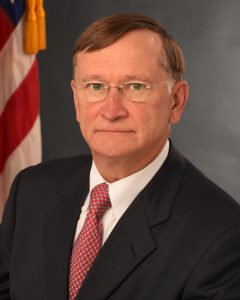The nation’s health care system is facing a growing number of actual and potential public health disasters, both manmade and natural, that require a coordinated federal, state, and local response. One of the people on the front line of anticipating and planning for these disasters is Robert Kadlec, MD, assistant secretary for preparedness and response (ASPR) at the U.S. Department of Health and Human Services (HHS).
Dr. Kadlec recently sat down with ACEP Now editorial board member Ricardo Martinez, MD, FACEP, chief medical officer for Adeptus Health in Irving, Texas, and assistant professor of emergency medicine at Emory University in Atlanta, to discuss his role at HHS and how emergency medicine can take an active role in disaster preparedness planning.
RM: Can you tell us about ASPR and how you arrived there?
RK: I guess I’ll start in the beginning. One of the hard lessons out of Katrina was the inability to mount an effective federal, medical, and public health response in support of the state of Louisiana as a result of that terrible storm. The health consequences were both direct and indirect. Direct to some people, but indirect to health care systems in Louisiana and the neighboring Gulf states.
My participation in the ASPR project began at that time when I was working for the chairman of the Subcommittee on Bioterrorism and Public Health Preparedness, Senator Richard Burr, who was a freshman senator from Northern Carolina. He was paired with one of the lions of the Senate, Ted Kennedy. You could say they made an odd couple, but they were both personally very committed to the concept of how do we provide better support to state and local authorities in the event of a disaster that overwhelms their means or their capabilities to help their community and their constituents.
The concept was really modeled after the Department of Defense and the Goldwater-Nichols Act in so far as saying someone needs to be in charge, and someone needs to lead an effort that is not only during the disaster, but well before the disaster to ensure that there’s advocacy for state and local authorities to get the resources they need to make sure that their public health systems and their health care systems are not only resilient but responsive and have capacity. Also, the goal was to ensure that the federal response in support of those state and local authorities is coherent, comprehensive, and coordinated. That is where I was personally involved. Then, as a consequence of my departure from the Senate, the bill was made law and the ASPR was created. It just was a coincidence that, 12 or 14 years later, I was asked to become the ASPR. As a result of the change in administration, I accepted the opportunity and went through Senate confirmation, and here I am.
RM: Tell us about your vision for regionalizing disaster response.
RK: Well, it was already visualized with the health care coalitions that have been funded in each state through federal grants. It was this idea that in very resilient communities, like in Texas, they had created a very capable coordinated local response; everything begins locally. As we saw in Houston and Beaumont, Texas, and as I saw in Miami as well as in the Tampa region, they had a pretty well established foundation for which they could mobilize their local and state capabilities. The idea then was coalesced with what was experienced in the Ebola event, which was something that was quite extraordinary. You could say predictable, but the impact on America and on the health care system was huge and disproportionate. What was created out of that was a national system with regional capabilities as it related to highly infectious diseases like Ebola.
Pages: 1 2 3 4 5 | Single Page






One Response to “Laying the Groundwork for Effective Disaster Response: An Interview with Dr. Robert Kadlec”
March 17, 2019
Marianne CannonVery distressing times with an increase in natural disasters .Maybe time for ACEP to take up climate change in the same way as (admirably)gun laws and lobbyists have been targeted .
From a political and a “sustainability in healthcare” perspective there is much to do.The reputation damage to any health care organization which ignores this “elephant in the room” may be considerable in the intermediate and longer term, especially as we are the medical experts in disaster as well as environmental medicine .
Other healthcare organisations have divested from fossil fuels and are leading the way in advocacy and health care sustainability .
ACEP has an important role to play, in the view of many .